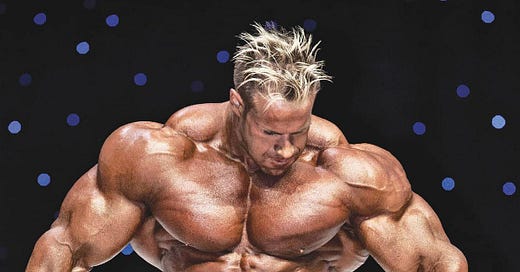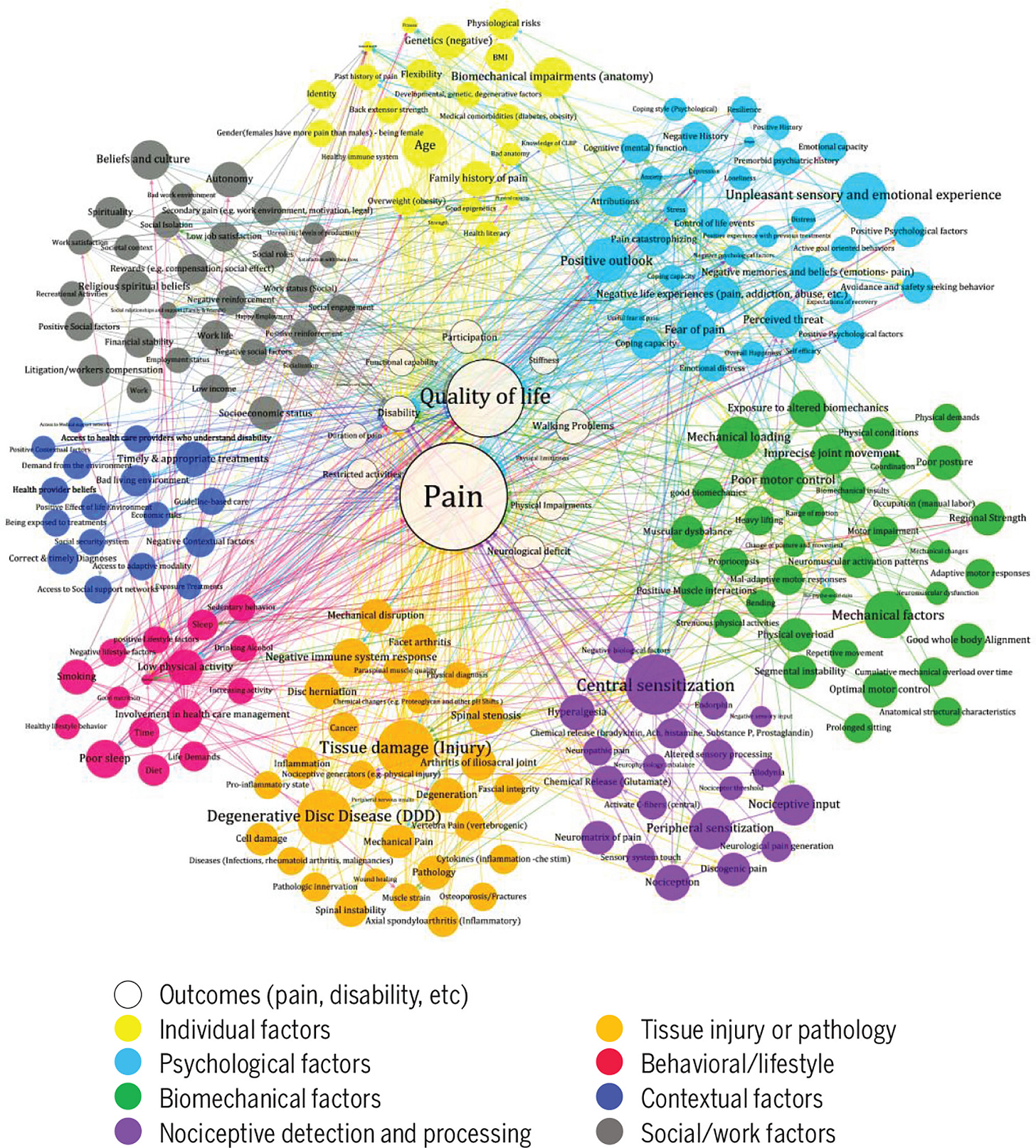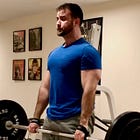Fitness Myths I Wish Would Die
There's a lot of misinformation in health and fitness. These 5 myths just won't get put to bed.
In this edition of Momentum you’ll learn about five common fitness myths and why they should be once and for all put to rest.
I’d bet that every professional feels a certain way about their respective field.
You know what is good information and misinformation and you stay up to date to help your clients the best you can but somehow the misinformation persists.
You spend all day everyday answering the same questions over and over and wondering why these myths are still circulating.
These five fitness and health myths are harder to kill than the common cold.
Here is what this post will cover:
How lifting weights doesn’t make you bulky
What happens if you miss the anabolic window after training (psst… the answer is nothing)
The multifactorial nature of lower back pain
How to use exercise to lose weight
Why you should have a progressive program and not “confuse” your muscles
Myth 1: Lifting Weights Makes you Bulky
“I don’t want to bulk up.”
I hear this mostly from women but occasionally men when we are discussing the beginning of a weight training routine.
I understand where people are coming from. Not everyone wants to look like Jay Cutler.
But here is one thing I know for sure.
Jay Cutler didn’t win 4 Mr. Olympia titles by accident.
Here’s the real deal about bulking up from weight training: it doesn’t happen by accident.
Even when trying, most people have a hard time bulking up.
It takes years of consistent, intense, and focused effort to grow substantial muscle to the point where you bulk up.
Now, when you exercise with weights your body has to do 2 things following your session. First, it has to replenish the stored carbohydrates or fats that are stored in our muscles for energy. Second, it has to repair muscle tissue that was strained during the actual exercise.
In order for that second process to build a significant portion of muscle you need to first train really, really hard and also eat in a sustained calorie surplus.
Anyone who has tried to gain significant amounts of muscle will tell you how hard it is.
So, no, you should not fear bulking up from weight training. It is difficult to do and achieve and even if you do build an appreciable amount of muscle you will probably not look anything like what you think “bulked up” is.
Don’t fear the weights!
Need some direction with strength training? I’ve got tons of programs to get you moving. Scroll to the bottom for links and training program descriptions!
Myth 2: The Anabolic Window Exists
The anabolic window refers to the time after a workout in which feeding is imperative to elicit gains from your training session.
It was once believed that the first 30 minutes after a workout were crucial and you needed to get certain nutrients in right away otherwise you may as well have not even worked out.
So, of course it isn’t that black and white.
To further complicate this answer it matters what you are training for: health or performance.
For health, nutrient timing doesn’t seem to matter that much. What matters most is the total intake of macro and micro nutrients spread across the entire day.
Changing the frequency of meals has shown limited impact on weight loss and body composition but it may impact your satiety and appetite positively.
So, no eating every 3 hours doesn’t stoke your metabolism any more than eating once a day but no surprise here, eating more frequently may positive impact your feelings of hunger or fullness which could help you stick to a diet.
For performance and optimizing recovery, the timing of your nutrition may matter a bit more but the effect size isn’t as large as some think.
The International Society of Nutrition’s Position Stand on Nutrient Timing says the following about nutrient timing post training:
On Carbs After A Workout
Carbohydrates stores are maintained well with a higher carbohydrate diet
If you’re a competitive athlete and you have less than 4 hours to recover between exercise bouts it is recommended that you refeed with carbohydrates (1.2 g/kg/h) with a preference towards carbohydrate sources that have a high glycemic index AKA are quick digesting and possibly adding in a little protein at a rate of (0.2–0.4 g/kg/h)
I weigh around 200 pounds and If I was competing at a CrossFit event or track meet and had 2 longer duration events with a 2-4 hour break in between I would try to get in around 100 grams of carbs from Gatorade and some dried fruit and about 20-30 grams of protein from something easy to digest like whey
On Protein After a Workout
Meeting the total daily intake of protein, preferably with evenly spaced protein feedings (approximately every 3 hours during the day), should be viewed as a primary area of emphasis for exercising individuals
More frequent feedings is linked to better results for maximizing muscle protein synthesis as opposed to more sparse feedings
20–40 grams per feeding has been shown to maximally stimulate muscle protein synthesis, although more is tolerated just fine
The window to maximize muscle protein synthesis is up to 2 hours following the end of training
Finally, a lot of what determines your post-workout meal is your pre-workout meal. The size and timing of a pre-exercise meal may impact the extent to which post-exercise protein feeding is required.
I work out first thing in the morning most of the time and I do it on an empty stomach. I make sure I eat first thing once I finish my workout. Mostly because I’m hungry and in a rush but also to optimize my performance as best I can.
When my schedule gets messed up and I have to train at night I worry much less about when and exactly what I eat after a workout because I have a full day of calories before my training.
Consider this myth busted with nuance…
Myth 3: Your Back Pain is Caused by _______________
Lower back pain is the leading cause of disability and burden of disease worldwide.
Lower back pain is the 3rd most common reason people visit doctors in the US.
Lower back pain SUCKS.
If lower back pain was caused by something as simple as “a weak core” or “tight hamstrings” or “sleeping glutes” or “your bad mattress” then this problem would be a lot simpler to solve and not be such a huge burden on society.
Lower back pain is caused by a complex interaction between biological factors like tissue damage or inflammation, psychological factors like high stress levels, and social factors like cigarette smoking or poor sleep.
Consider this graphical representation of documented contributors to someone’s lower back pain experience:
There are so many potential inputs into an experience of lower back pain. Despite what you see on TikTok, there are no magic exercises or special foam rollers to fix it.
I’ve put together a few resources for lower back pain. They are vague on purpose, since everyone’s situation is different. Read them here.
If you want a personalized plan or have questions about your lower back pain reach out to me at nickotrainingsystems@gmail.com to schedule a consultation.
Myth 4: To Lose Weight you Should Do Cardio, Not Lift Weights
For starters, you should do both regardless of your goal.
Read this part twice: the calories burned during any workout are grossly over-estimated and do not contribute significantly to weight loss.
Yes, that is the cruel and unfortunate truth.
My advice? Use dietary changes to achieve weight or fat loss goals and use your exercise to achieve the physical adaptations you desire.
Want to lose weight and get stronger? Caloric deficit + strength training as a priority + cardio for heart health.
Want to lose weight and run a 5k? Caloric deficit + running as a priority + strength training for metabolic health, structural health, and injury risk reduction
Of course, it’s way more nuanced than that, but that’s the general idea.
Myth 5: Muscle Confusion Leads to Muscle Growth
Muscles don’t get confused. Muscles aren’t sentient. What grows muscle is mechanical tension.
Applying tension to muscles in a progressive fashion is what leads to muscle growth.
This is also known as progressive overload, not confusion.
Like many tissues in our body, muscles adapt to stress. So, the stress needs to continue changing in order for our body to adapt. This stress accumulates over time and leads to steady adaptations given appropriate recovery time.
It can take time to develop good enough technique on an exercise to get great muscle growth. It can also take time to develop enough strength to use enough load to make gains.
If you are constantly changing exercises then you will never make great gains because you won’t have enough time to build up in load and establish great technique.
Yes, you must progressively overload and challenge the body in new ways. But you can do that with the same five exercises forever.
Now, doing five exercises forever sounds really stale, so you should vary your training periodically.
Very generally speaking you should stick to an exercise for 3-6 weeks, get stronger with it, set some rep or weight PRs, and then change it up if you want to although you certainly don’t need to.
I’ve been doing hamstring curls every week for 3 years straight. Maybe longer… I just vary the load, reps, sets, and technique, and switch between prone or seated to continue making gains.
Want more information on muscle building? Read these.
Wrapping Up
There is a lot of misinformation and false narratives surrounding health and fitness. Lifting weights does not make you bulky. For health the anabolic window isn’t as important as people think but for performance nutrient timing may matter more. Lower back pain is not caused by any one thing and the cause of it is different for everyone. Exercise unfortunately doesn’t contribute significantly to caloric output so dietary interventions will be the largest lever you pull to change your body weight. Finally, muscles don’t get confused and you should follow a structured training plan that uses progressive overload to build muscle and get stronger.
Now, let’s keep building Momentum together.
Nick is a sports chiropractor, strength and conditioning specialist, assistant professor of exercise science, and writer.
Check out my next-level training programs to finally get results.
Train with me on my program.
The training program varies based on my goals. It ranges from powerbuilding to hybrid athletic programs.
Get seriously strong.
This BREAKING GAINZ style program focuses on strength in the squat, bench, and deadlift and builds full-body muscle.
Get seriously strong and super jacked.
This BREAKING GAINZ style program focuses on strength in the squat, bench, and deadlift and builds full-body muscle.
This BREAKING GAINZ training format gets you jacked, strong, and fit
Combine strength training with metabolic conditioning to get you in the best shape of your life
Another classic BREAKING GAINZ training program that gets you jacked, strong, and fit
Perfect for beginners or home workout enthusiasts
Get in great shape with just your bodyweight and a pair of dumbbells
One-on-One Remote Training Programs
Limited availability: email me at nickotrainingsystems@gmail.com for more info.













